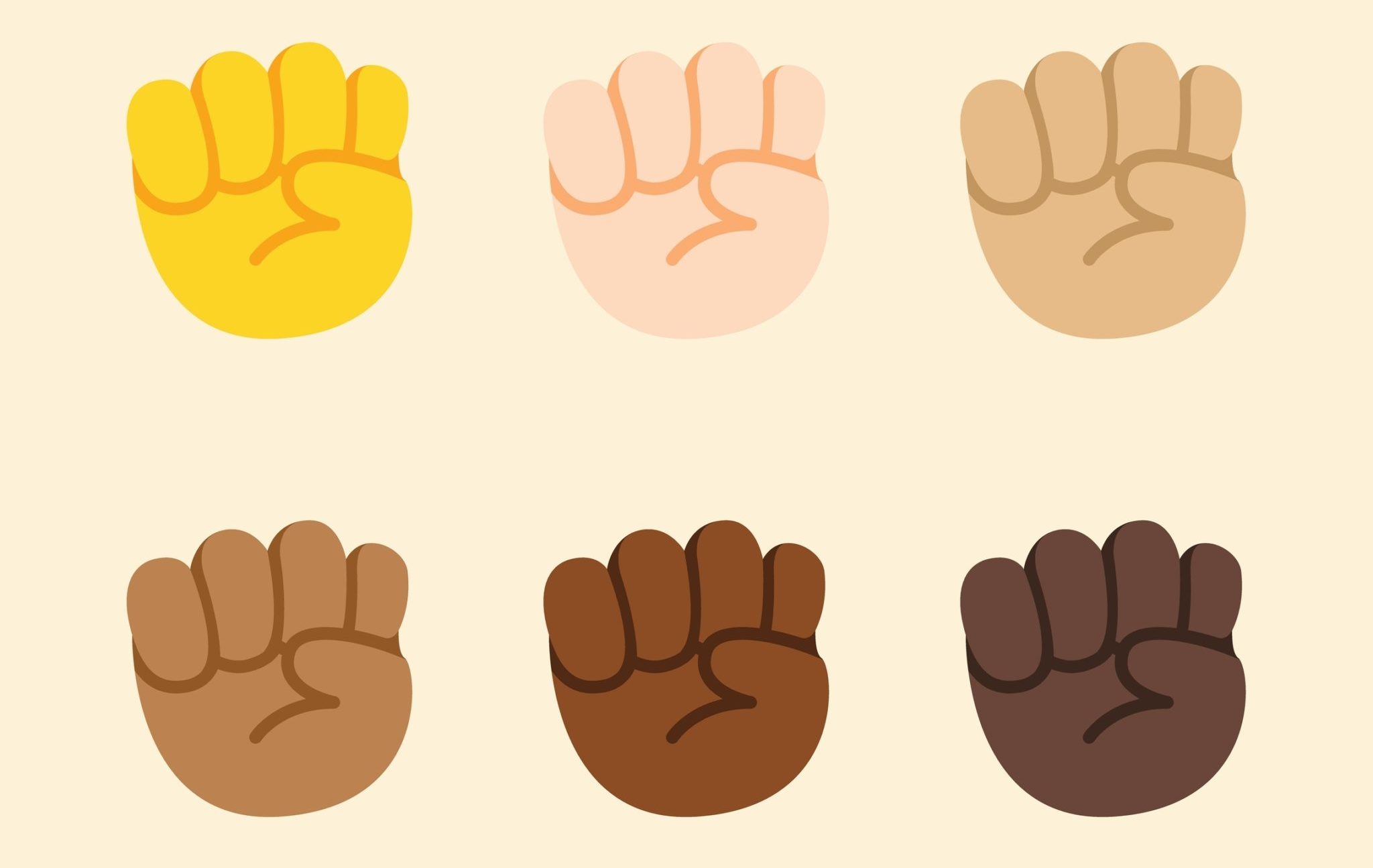Are Your Emojis Racist?

“Heath Racela identifies as three-quarters white and one-quarter Filipino,” begins a National Public Radio report published on the internet this week, detailing the fraught racial politics of choosing emoji skin colors. Your humble correspondent, for those who might be wondering, identifies as one-half white and one-half Irish.
It’s a rather strange construction. Either Mr. (Mx.?) Racela is one-quarter Filipino, or he is not. Race and ethnicity seem odd arenas for the advancement of the self-identification fad. These past few years we have witnessed the mainstreaming of a zealous race essentialism which asserts that such identities are the burdens of our history—inescapable if inconvenient facts handed down to us from the past.
Could the descendants of early American slavers wake up tomorrow and decide to identify as pureblood Javanese? Are the white progressives—Rachel Dolezal, Jessica Krug—who pretended to be black, then lost their careers and reputations on being outed, suddenly owed an apology?
My sense is that the trio of journalists whose bylines grace this groundbreaking piece of work would answer in the negative on both counts. (Why it took three people to produce “Which skin color emoji should you use? The answer can be more complex than you think” is a different question altogether, and entirely beyond me.)
Yet in the report we are introduced on these terms not just to Racela but to Sarai Cole, who “is originally from California and identifies as Black and an American Descendant of Slavery,” and Jennifer Epperson, who “identifies as Black.” In all this, admittedly, no identifier is more outrageous than “Alexander Robertson, an emoji researcher at Google and Ph.D. candidate,” whose racial identification is not provided. (Nor are those of writers Andrew McGill and Zara Rahman, the other two people named.)
The emoji issue has apparently been litigated and relitigated in the press ever since the color options debuted in 2015. The following spring, McGill wrote a piece in the Atlantic celebrating the progress made—just a year before, “if a black man or a Latino woman wanted to text a friend the thumbs-up emoji on an iPhone, a white hand would show up.” (Don’t ask me what a Latino woman is; I prefer “Latinx birthing person.”) But the color revolution, McGill contended in conclusion, still had a long way to go:
White people don’t have to use racemoji or risk denying their identity…. The default works fine. Perhaps the squeamishness on the part of whites has more to do with the acknowledgement that only white people hold this special privilege; to use the white emoji is to express a solidarity with people of color that does not exist.
So it becomes a self-reinforcing cycle. When white people opt out of racemoji in favor of the “default” yellow, those symbols become even more closely associated with whiteness—and the notion that white is the only raceless color. But that, of course, is already a foregone conclusion in American society. The Internet cannot escape the bonds of our minds, as much as people may want it to.
Two years later, Rahman published a similar argument in the Daily Dot, positing that yellow is white because it is not black. (That is, the default, by virtue of being the default, is understood as a stand-in for whiteness.) She concluded that, beyond the great leap forward of diverse emoji skin tones, “We need white people to confront how much space they take up, too.”
Look, everybody: I readily admit that I (a straight white guy) take up too much space in society right now, and have for a long time. But I swear I’m starting a diet next week.
In all seriousness, though, I wish I didn’t have the opportunity to talk about this. It’s just like when they took Mr. Potato Head’s gender away. It was silly and dumb, and if you objected to it you looked silly and dumb. But if you let every dumb, silly shift to the left go uncontested because it’s not a battle worth picking, it won’t be long before you can’t even recognize the ground on which you’re fighting. Conservatives should know by now they’re not going to be left alone.
Everything is political, if for no other reason than that the other side has made everything political. The progressive’s choice in emoji signifies a political allegiance, which means your choice in emoji signifies a political allegiance. “The hottest places in Hell,” an old admonition goes, “are reserved for those who in time of moral crisis preserve their neutral emojis.”
But another wise man—the greatest president who never was—once said: “I leave my emojis bart Simpson color.” A yellow thumbs up to that, Ye.
Comments